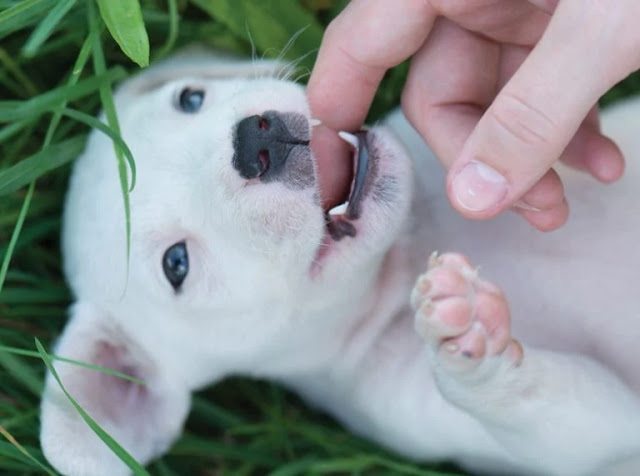why does my cat bite me?
Cat biting behavior
Cat biting behavior can be quite perplexing for many cat owners. From gentle nibbles to more aggressive bites, understanding why cats bite is crucial in maintaining a harmonious relationship with your feline friend. In this article, we will explore some common reasons behind why cats bite and how you can effectively manage this behavior.
How to stop cat biting
Dealing with a biting cat can be frustrating, but there are several ways to address and prevent this behavior.
Here are some tips to help you stop your cat from biting:
- Provide appropriate outlets for your cat’s energy: Cats often resort to biting when they have excessive energy. Make sure your cat has plenty of toys to play with, scratching posts, and a stimulating environment to keep them engaged.
- Avoid rough play: Sometimes, unintentionally encouraging rough play can lead to biting. Avoid using your hands as toys and opt for interactive toys that keep a safe distance between you and your cat during playtime.
- Positive reinforcement: When your cat displays non-biting behavior, reward them with treats or praise. Positive reinforcement can reinforce good behavior and discourage biting.
- Stay calm and avoid punishment: Reacting aggressively or punishing your cat for biting can escalate the situation and increase aggression. Instead, maintain a calm demeanor and redirect their biting onto appropriate toys or objects.
- Seek professional help: If your cat’s biting behavior persists or escalates, it’s recommended to consult with a veterinarian or an animal behaviorist. They can assess the underlying causes and provide tailored advice to address the issue.
Cat aggression towards humans
While cats are generally known for their independent and aloof nature, some cats may exhibit aggression towards humans. Understanding the reasons behind this aggression can help you manage and minimize any potential risks.
Here are some factors that may contribute to cat aggression:
- Fear or anxiety: Cats may resort to aggression when they feel threatened or scared. Identifying triggers and providing a safe environment can help alleviate their anxiety.
- Pain or discomfort: If a cat is in pain or experiencing discomfort, they may bite out of instinct to protect themselves. Regular vet check-ups can ensure their well-being.
- Territorial behavior: Cats are territorial by nature, and they may become aggressive if they perceive their territory to be invaded. Creating separate spaces for multiple cats can reduce territorial disputes.
- Play aggression: Kittens and younger cats often engage in play biting, but it’s important to establish boundaries and teach them appropriate play behavior.
- Redirected aggression: Cats can sometimes redirect their aggression towards humans if they are unable to access the source of their frustration, such as another animal outside the window. Identifying triggers and offering distractions can help prevent such situations.
Understanding cat body language
One key aspect in managing cat biting behavior is understanding their body language. Cats use various signals to communicate their mood and intentions. By paying attention to these cues, you can better anticipate and respond to their needs.
Here are some common cat body language signals:
- Tail position: A relaxed and gently swaying tail usually indicates a content cat. However, an aggressively twitching or puffed-up tail may suggest agitation or potential aggression.
- Ear position: Forward-facing ears typically indicate a relaxed or curious cat. Ears flattened against the head can signify fear, anxiety, or aggression.
- Pupil dilation: Dilated pupils can indicate excitement, fear, or aggression. However, it’s essential to consider the overall context and accompanying body language.
- Posture: A crouched or tense body posture may indicate a defensive or aggressive stance, while a relaxed and loose posture suggests a calm cat.
- Hissing or growling: These vocalizations are clear signs of aggression or fear. It’s important to give the cat space and avoid provoking them further.
Why does my cat bite me?
There can be various reasons behind why cats bite their owners. Understanding these reasons can help you address the issue appropriately.
Here are a few common explanations for cat biting:
- Instinctual behavior: Cats naturally use their mouths and teeth to explore their environment, play, and establish dominance. Biting can be a manifestation of these instinctual behaviors.
- Overstimulation: Some cats may become overstimulated during petting or interaction, leading them to bite as a way of communicating their discomfort. Learning to recognize your cat’s thresholds can prevent overstimulation.
- Lack of socialization: Cats that have not been properly socialized during their early stages of life may exhibit fear or defensive aggression towards humans. Patient socialization efforts can help them overcome these tendencies.
- Attention-seeking behavior: Cats may learn that biting or nipping can elicit a reaction from their owners. This behavior can be reinforced if inadvertently rewarded with attention or play.
- Medical issues: Underlying medical conditions, such as dental pain, arthritis, or skin sensitivities, can cause cats to bite. It’s important to rule out any possible medical causes through a thorough veterinary examination.
Why does my cat bite me gently out of nowhere?
If your cat bites you gently out of nowhere, it may be a sign of love or affection. This behavior is often referred to as a “love bite” or a “play bite.” Cats may engage in gentle biting as a way of showing affection or during playtime. It’s important to differentiate between playful biting and aggressive biting. Playful bites are usually gentle, not accompanied by hissing or growling, and often involve minimal pressure from the cat’s jaws.
Why does my cat bite me gently?
Cats may bite gently for various reasons, including:
- Communication: Cats communicate through a range of behaviors, and gentle biting can be one of them. It can be a way for your cat to get your attention or convey a message.
- Play behavior: Kittens and younger cats often engage in gentle biting as part of their play behavior. It’s their way of exploring and interacting with their environment.
- Show of affection: Some cats express their affection through gentle nibbling or love bites. It’s their unique way of showing their love for their human companions.
- Overstimulation: Just like with more aggressive biting, cats can also bite gently when they feel overstimulated or overwhelmed during interactions. Recognizing their limits and providing breaks can prevent escalation.
It’s important to note that every cat is unique, and their biting behavior can vary. Observing their body language and understanding their individual preferences can help you better interpret their intentions and respond accordingly.
Remember, seeking professional advice when needed is crucial in addressing any significant behavior concerns.













